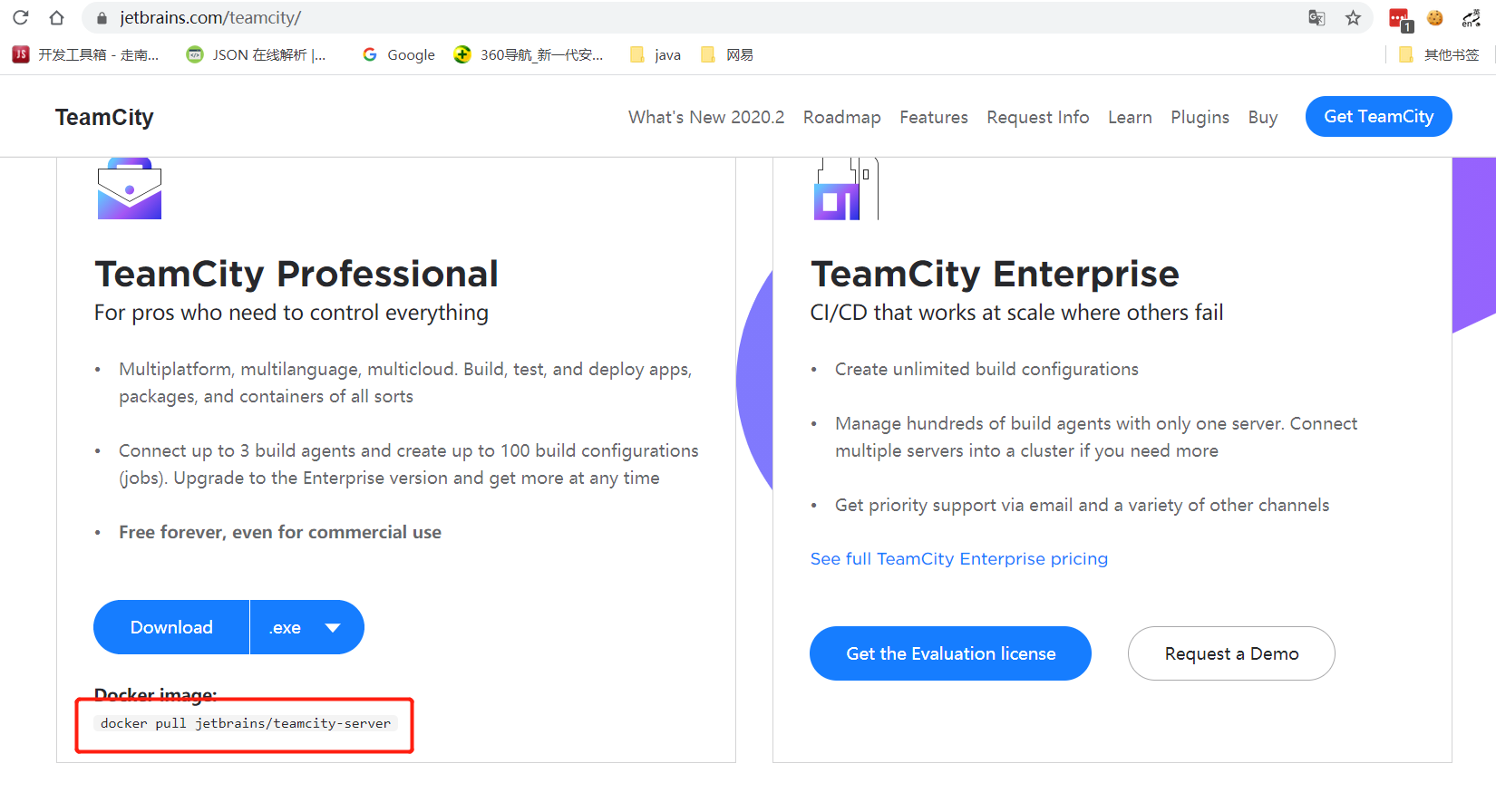
- #Teamcity docker for free
- #Teamcity docker install
- #Teamcity docker software
- #Teamcity docker free
- #Teamcity docker windows
Once TeamCity has finished setting itself up exit the container via +C+ because it running interactively. The initial process is building up the configuration files that are stored on the host at /data/teamcity_server/datadir. If not, ensure you have a security group rule for port 8111. You did remember to set up your security group in AWS EC2 correctly didn’t you? If you did you’ll see the screen below. Open a browser and navigate to port 8111 on the hosts IP address. v /data/teamcity_server/datadir:/data/teamcity_server/datadirĪs it starts up it wants to ask you a number of questions through the web site. That way you’ll see the teamcity start up process and can look for any problems.ĭocker run -it -name teamcity-server-instance It is useful to start in interactive mode the first time. We expose ports through the -p argument and we map volumes through the -v arguments. Then we can start the teamcity-server container with the following command. Sudo mkdir -p /data/teamcity_server/datadir Therefore create the directory structure on the host that we will map to the containers We’ll need to do the same for the agent container. If you don’t map the container’s log path to somewhere on the host then you’ll lose them if the container is stopped. The same goes for the logs output from TeamCity. These need to be located on the host and mapped to the container because if they weren’t you’ll lose all of your changes each time the container started. TeamCity adapts its behaviour based on a number of configuration settings. Not only is there a requirement to expose ports but you also need to map file locations too. With these TeamCity container images you have to do that and more. Last time when I started containers I had to map the ports exposed by the container to ports exposed by the host machine. Whilst the first command downloaded a number of container layers, the second gets away with only downloading a smaller subset – the teamcity-agent container shares many of its base layers with the teamcity-server. You may notice one of the benefit of containers at this point. In the terminal window, issue the following two commands The next step is to get these container images onto your machine. Whilst it is possible to search and browse it, you do really need to known what you are looking for. However you won’t be surprise to learn with container it is easier.ĭocker maintains a hub of all public repositories at.
#Teamcity docker install
If you were doing this outside of the container world you would obtain the installation package, install in on the target machine and then configure it. We are going to setup TeamCity but where to start.

It is relatively straightforward to set up Docker on an Amazon Linux instance.
#Teamcity docker free
The T2-Micro size is part of the free tier so you won’t be charged. So sign up for an AWS account and create a new Amazon Linux T2-Micro EC2 instance.
#Teamcity docker for free
You can do this for free if you select the right instance size. I decided to use one of the Amazon Web Services pre baked Linux EC2 instances. So where to start? Obviously you could go the whole hog and install a flavour of Linux into a VM, but I went for a simpler solution.

Whilst in this write up they are sharing the same host machine, having the two components in separate containers should allow you to scale up with ease. The one thing I decided to do to help my understanding was to set up the main TeamCity server and one build agent in separate containers. So I went about trying to set up TeamCity.

#Teamcity docker windows
In order to translate the experiences I have had understanding Docker on Windows to Linux I thought I would try setting up something I was ready familiar with. And as ninety nine percent of the available containers are Linux ones… you still be doing a lot of work with Bash! Containers can do a lot of things but they are not magic. Therefore you can only run Windows containers on a Windows machine and you can only run Linux containers on Linux machine.
#Teamcity docker software
This is not the case with containers as the host operating system is available to the software running in the container. With Virtual Machines you can run a Linux guest on a Windows Host and vice versa because the hypervisor is pretending to be bare computer with no OS running on it. Now it is time to see if any of that knowledge is transferable to Docker on Linux.īut before that I wanted to call out a seemingly an obvious statement for people equating containers to virtual machines. Last time I walked through my experience of Docker on Windows. Hommy Rosado on Setting up Hot Towel with Visu… Nigel Hamer on Connecting Web Apps to externa…ĭotdestroyer on Connecting Web Apps to externa… Ignoring Work in Progress – Agile Anti Patterns.The Scrum Master, Technical Lead Contradiction.


 0 kommentar(er)
0 kommentar(er)
